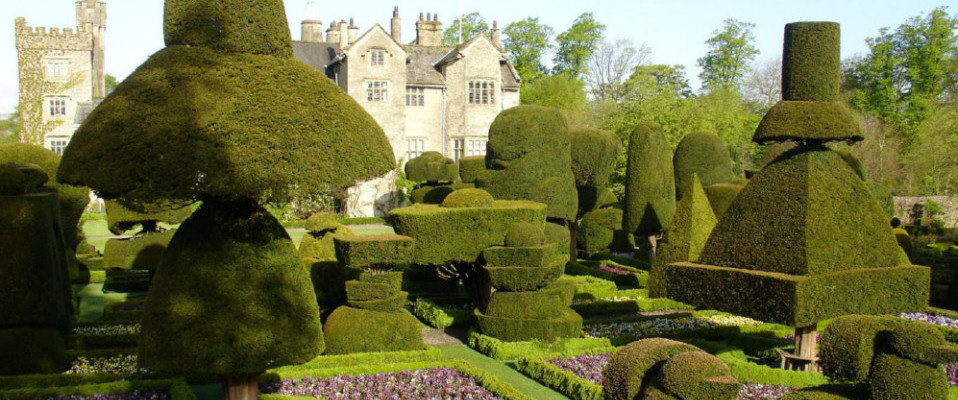Our first destination was Levens Hall, a house built around a pele tower erected by the Redman family about 1350. It was greatly extended by the next occupants, the Bellinghams, and in 1689 was sold to James Grahme, Keeper of the Privy Purse to James II. After the Glorious Revolution of 1688 Grahme thought it prudent to place some distance between himself and the new regime in London, but he did not mean to live without London comforts, so the house was again extended and modernised in the 1690s. It remained largely unchanged thereafter until the 1820s, when Mary Howard, the last of Grahme’s direct descendants, modified much of the interior to create a deliberate evocation of the house’s Elizabethan heyday. The house is now owned and lived in by the Bagot family, who inherited in 1883.

At Levens we met Susan Stuart, furniture historian and author of a two-volume history of Gillows of Lancaster, who had researched the furniture supplied by Gillows for the house in the early 19th century. Also with us was Adam Bowett, who had researched furniture supplied to Colonel Grahme by Thomas Pistor and Gerrit Jensen, two of the foremost London cabinet-makers of the late 17th century. Our tour was chaperoned by Levens’ chief guide, who found Susan and Adam’s fascination with furniture quite mystifying. A walnut writing table stated to be c.1750 was shown by Susan Stuart to have been made by Gillows in 1808, but even when shown copies of the bills and original Gillows sketches our guide was not convinced. This episode set the tone for the visit, and it was clear that this was a house in which the romance of the past, whether historically accurate or not, was valued very highly. When confronted by an early 19th century Gillows oak bed, baldly stated to be Portuguese and made of Spanish chestnut, it was prudent to keep silent and concentrate on the uncontroversial ‘Levens pattern’ chairs supplied by the Lancaster firm in 1808.
There was a great deal more to see and admire; the collection included arms and armour, paintings by Rubens, Lely, Turner, Peter de Wint and Edward Burne-Jones, silver by Peter Archambo and William Kidney, a remarkably long suite of brass filigree sconces, and a fine longcase clock by George Graham. Joseph Nash’s watercolours of the 1840s hung in several rooms, and in them it was possible to see many of the same furnishings and objects we saw as we passed through the house. Dotted about the house was a small collection of Napoleonic memorabilia, including Napoleon’s saddle and the Duke of Wellington’s campaign bed. In several rooms there were sections of fine gilt leather wall hangings, although which was 17th century Spanish and which was 19th century Gillows was difficult to determine.
One of the most interesting aspects of the house was the way in which Mary Howard and her descendants had sought to recreate an Elizabethan idyll, with armour hanging in the hall, dark oak panelling, and ‘antique’ furniture. Much of the latter, like the many cane chairs bought new in the 19th century, was now considered to genuine 17th century material, but perhaps this is why there is a sense of intimacy and continuity at Levens which is matched by few other houses of comparable size and status.
One should never leave Levens without seeing the gardens, which were looking at their best in the spring sunshine. The topiary garden, first planted in the early 18th century by Guillaume Beaumont, formerly gardener to James II, cannot be beaten for romance and old English charm.
